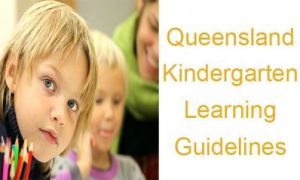Implementing sustainable practices in a preschool room is a fantastic way to teach children about environmental responsibility while also creating a healthier space for them to learn and play. The following article provides information on Sustainable Practices For The Preschool Room, Reduce, Reuse, Recycle Ideas, Energy Efficiency In The Preschool Room, Water Conservation In The Preschool Room, Sustainable Learning Activities and more.
Sustainable Practices For The Preschool Room
1. Reduce, Reuse, Recycle
-
Reduce Waste: Minimize the use of single-use plastics by opting for reusable items like cloth napkins, stainless steel utensils, and glass containers.
-
Reuse Materials: Encourage creativity by reusing materials like cardboard boxes, old clothes for craft projects, and scrap paper for drawing.
-
Recycle: Set up clearly labeled recycling bins for paper, plastic, and other recyclables.
2. Energy Efficiency
-
Energy-Saving Appliances: Use energy-efficient light bulbs and appliances.
-
Natural Light: Make the most of natural light by keeping windows clean and using sheer curtains.
-
Turn Off: Ensure lights and electronic devices are turned off when not in use.
3. Water Conservation
-
Rainwater Harvesting: Collect rainwater for watering plants.
-
Low-Flow Fixtures: Install low-flow faucets and toilets to reduce water usage.
-
Teach Conservation: Educate children about the importance of saving water and encourage them to turn off taps properly.
4. Eco-Friendly Cleaning
-
Green Cleaning Products: Use environmentally friendly cleaning products that are non-toxic and biodegradable.
-
Reusable Cloths: Replace disposable cleaning wipes with reusable cloths that can be washed and reused.
5. Sustainable Learning Activities
-
Nature-Based Learning: Incorporate outdoor play and nature exploration into the curriculum.
-
Eco Projects: Engage children in projects like planting a garden, composting, and recycling crafts.
-
Sustainability Discussions: Have regular discussions about sustainability and how they can help protect the environment.
6. Community Involvement
-
Local Sourcing: Purchase supplies from local, sustainable sources whenever possible.
-
Community Clean-Ups: Organize clean-up events with the children to help keep the local environment clean.
Reduce, Reuse, Recycle Ideas
Here are some practical and creative ideas to embrace the principles of reduce, reuse, and recycle in your preschool room:
Reduce
-
Minimize Paper Usage: Use digital platforms for documentation and communication instead of paper. Encourage parents to opt for digital newsletters and forms.
-
Eco-Friendly Supplies: Choose supplies made from sustainable materials, such as bamboo or recycled plastic, and avoid single-use items.
-
Bulk Buying: Purchase snacks and art supplies in bulk to reduce packaging waste.
Reuse
-
Creative Craft Supplies: Collect and repurpose everyday items like cardboard boxes, plastic bottles, and fabric scraps for craft projects.
-
Toy Rotation: Implement a toy rotation system to keep things fresh for children without needing to buy new toys frequently.
-
Furniture and Decor: Repurpose old furniture and decorations, giving them a new life with a coat of paint or some creative adjustments.
Recycle
-
Recycling Stations: Set up dedicated recycling bins for paper, plastic, glass, and other recyclables. Make it a fun activity for the children to sort items into the correct bins.
-
Composting: Introduce composting for organic waste like fruit peels and leftover food. Use the compost in your preschool garden.
-
Recycling Crafts: Engage children in craft activities using recyclable materials, teaching them how to turn trash into treasure.
Energy Efficiency In The Preschool Room
Improving energy efficiency in a preschool room not only reduces costs but also teaches children valuable lessons about sustainability. Here are some practical strategies:
Lighting
-
LED Bulbs: Replace incandescent bulbs with LED bulbs. They use less energy and last longer.
-
Natural Light: Utilize natural light as much as possible by keeping windows clean and using light-colored curtains that let light in while reducing glare.
-
Motion Sensors: Install motion sensor lights in less frequently used areas like storage rooms and bathrooms to ensure lights are only on when needed.
Heating and Cooling
-
Insulation: Ensure the room is well-insulated to maintain a consistent temperature without over-reliance on heating and cooling systems.
-
Programmable Thermostat: Use a programmable thermostat to automatically adjust the temperature when the room is not in use.
-
Ceiling Fans: Use ceiling fans to circulate air, making the room feel cooler in the summer and distributing warm air in the winter.
Appliances and Electronics
-
Energy-Efficient Appliances: Choose ENERGY STAR-rated appliances and electronics, which are more energy-efficient.
-
Unplug Unused Devices: Unplug devices and appliances when they are not in use to prevent energy waste from standby power.
-
Power Strips: Use power strips to easily turn off multiple devices at once.
Windows and Doors
-
Weather Stripping: Apply weather stripping to windows and doors to prevent drafts and keep the room temperature stable.
-
Double-Glazed Windows: If possible, install double-glazed windows to improve insulation and reduce energy loss.
Teaching Moments
-
Energy-Saving Habits: Teach children to turn off lights and devices when they are not needed.
-
Energy Monitoring: Use an energy monitor to show children how much energy is being used and where savings can be made.
-
Eco-Friendly Activities: Incorporate lessons about energy efficiency into your curriculum through games, stories, and experiments.
Renewable Energy
-
Solar Panels: If feasible, consider installing solar panels to generate renewable energy for your preschool.
-
Wind Energy: Explore small-scale wind turbines or other renewable energy sources as part of educational projects.
Efficient Heating and Cooling Practices
-
Windows and Blinds: Use blinds and shades to manage sunlight and heat. Open them during the winter to let in warmth, and close them during the summer to keep the room cool.
By implementing these energy-efficient practices, you can create a more sustainable environment while also serving as a role model for the children in your care.
Water Conservation In The Preschool Room
Water conservation is crucial in creating a sustainable preschool environment and teaching children the importance of preserving this vital resource. Here are some practical ideas to implement:
1. Efficient Fixtures and Fittings
-
Low-Flow Fixtures: Install low-flow faucets, toilets, and showerheads to reduce water usage.
-
Automatic Shut-Off: Use faucets with automatic shut-off features to prevent water from being left on accidentally.
2. Water-Saving Habits
-
Turn Off Taps: Teach children to turn off taps while they lather their hands with soap or brush their teeth.
-
Monitor Usage: Show children how to monitor their water usage and make it a fun game to use less water each day.
3. Rainwater Harvesting
-
Collection Systems: Set up rainwater collection systems to capture rainwater from the roof. This water can be used for activities like watering plants.
-
Rain Barrels: Use rain barrels to store collected rainwater and demonstrate its use in the garden.
4. Reusing Water
-
Water Play: Reuse water from water play activities for gardening or cleaning purposes.
-
Gray Water: Implement gray water systems to reuse water from sinks for flushing toilets or irrigation.
5. Gardening with Conservation in Mind
-
Drought-Resistant Plants: Choose drought-resistant plants for your preschool garden to reduce the need for frequent watering.
-
Mulching: Use mulch to retain moisture in the soil and reduce the need for watering.
6. Education and Activities
-
Water Conservation Lessons: Incorporate lessons about the water cycle, the importance of water, and ways to conserve it into your curriculum.
-
Interactive Activities: Engage children in activities like building a simple rain gauge, conducting water audits, and creating posters about water conservation.
7. Maintenance and Monitoring
-
Regular Checks: Regularly check for leaks and fix them promptly to prevent water waste.
-
Water Meters: Install water meters to monitor usage and identify areas where water can be saved.
8. Involving the Community
-
Parent Workshops: Host workshops for parents on water conservation practices they can implement at home.
-
Community Projects: Organize community projects like local clean-ups and awareness campaigns on water conservation.
By implementing these practices, you can create a water-efficient preschool environment that not only saves resources but also educates children about the importance of water conservation.
Sustainable Learning Activities
Sustainable learning activities can be a wonderful way to teach children about environmental responsibility while also engaging them in fun and educational experiences. Here are some creative ideas:
1. Nature-Based Learning
-
Outdoor Exploration: Take children on nature walks to observe plants, animals, and insects. Use these outings to discuss ecosystems, habitats, and the importance of biodiversity.
-
Garden Projects: Start a garden where children can plant, water, and care for vegetables, herbs, and flowers. Teach them about composting and the life cycle of plants.
2. Recycling and Upcycling Crafts
-
Recycled Art: Use materials like cardboard, plastic bottles, and old magazines to create art projects. This could include making collages, sculptures, or homemade paper.
-
Upcycled Toys: Create toys and games from recycled materials, such as turning a shoebox into a puppet theater or using bottle caps for a counting game.
3. Water Conservation Activities
-
Water Cycle Experiments: Set up simple experiments to demonstrate the water cycle, such as creating a mini water cycle in a plastic bag.
-
Saving Water: Implement a "water-saving challenge" where children try to reduce water usage by turning off taps while washing hands or brushing teeth.
4. Energy Awareness
-
Energy Detective: Encourage children to be "energy detectives" by identifying where energy is being wasted in the classroom and coming up with solutions to save energy.
-
Solar Oven: Build a solar oven using a cardboard box, aluminum foil, and plastic wrap. Use it to cook simple snacks like s'mores, teaching children about renewable energy.
5. Environmental Storytelling and Discussions
-
Eco-Books: Read books about sustainability, nature, and conservation. Discuss the themes and encourage children to share their thoughts and ideas.
-
Storytelling: Invite children to create their own stories about protecting the environment. They can illustrate their stories and share them with the class.
6. Hands-On Sustainability Projects
-
Composting: Set up a compost bin and involve children in the process of composting food scraps and garden waste.
-
Recycling Relay: Organize a fun relay race where children sort items into the correct recycling bins.
7. Community Involvement
-
Clean-Up Projects: Plan community clean-up events where children can help pick up litter in a local park or beach.
-
Sustainability Fair: Host a fair where children can showcase their sustainable projects and share what they've learned with parents and the community.
8. Interactive Learning Tools
-
Eco-Friendly Apps and Games: Use educational apps and games that focus on sustainability and environmental awareness.
-
Virtual Field Trips: Take virtual field trips to nature reserves, farms, or recycling plants to learn about environmental efforts around the world.
Involve the Children
-
Eco-Lessons: Regularly discuss the importance of reducing, reusing, and recycling with the children. Use stories, songs, and activities to reinforce these concepts.
-
Gardening: Start a small garden and teach the children about growing their own food, composting, and the life cycle of plants.
-
Eco-Awards: Create a reward system for children who practice sustainable habits, such as bringing a reusable water bottle or participating in recycling activities.
Parental Involvement
-
Workshops: Host workshops for parents on sustainable practices they can implement at home.
-
Green Celebrations: Encourage parents to adopt eco-friendly practices for birthday parties and other celebrations, like using reusable party supplies and decorations.
By integrating these practices, you can create a more sustainable preschool environment that not only benefits the planet but also instills valuable lessons in the children.
Further Reading
Sustainability Practices in Childcare
Teaching Children About Sustainability
Sustainability Ideas For Early Childhood Services


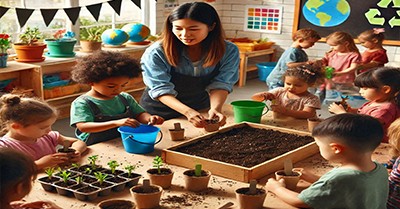
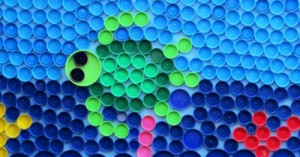
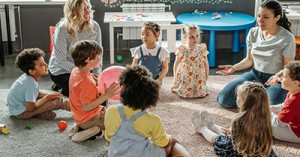
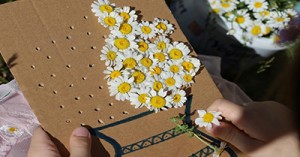
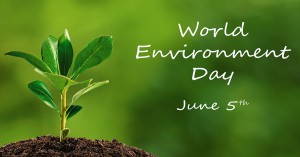
 As an Educator in Australia, your pay rate falls under the Children’s Services Award 2010. This award states the minimum amount that an employer can
As an Educator in Australia, your pay rate falls under the Children’s Services Award 2010. This award states the minimum amount that an employer can When working as a qualified Early Childhood Teacher (with a university degree) within a service, your rate of pay will come from the Educational Services
When working as a qualified Early Childhood Teacher (with a university degree) within a service, your rate of pay will come from the Educational Services When working as a Diploma Qualified Educator your pay rate is from the Children's Services Award 2010. This Award states your minimum rate of pay
When working as a Diploma Qualified Educator your pay rate is from the Children's Services Award 2010. This Award states your minimum rate of pay When working as a Cert 3 Qualified Educator, your pay rate is from the Children's Services Award 2010. This Award states your minimum rate of
When working as a Cert 3 Qualified Educator, your pay rate is from the Children's Services Award 2010. This Award states your minimum rate of Educational Leaders play a crucial role in their early childhood service by ensuring that the educational program aligns with best practices and supports the holistic
Educational Leaders play a crucial role in their early childhood service by ensuring that the educational program aligns with best practices and supports the holistic In early childhood education and care, ratios are more than a technicality—they are a frontline safeguard. Every child deserves responsive supervision, emotional connection, and developmental
In early childhood education and care, ratios are more than a technicality—they are a frontline safeguard. Every child deserves responsive supervision, emotional connection, and developmental Here’s a comprehensive Mobile Phone and Smart Watch Policy tailored for early childhood education and care (ECEC) services in Australia, aligned with the latest 2025
Here’s a comprehensive Mobile Phone and Smart Watch Policy tailored for early childhood education and care (ECEC) services in Australia, aligned with the latest 2025 With the new national child safety reforms kicking in on 1 September 2025, early childhood services like yours have a real opportunity to lead the
With the new national child safety reforms kicking in on 1 September 2025, early childhood services like yours have a real opportunity to lead the The Sea of Fish Challenge is a national initiative that invites children, educators, families, and communities to create and display fish artworks as a symbol
The Sea of Fish Challenge is a national initiative that invites children, educators, families, and communities to create and display fish artworks as a symbol Across the early childhood education and care sector, educators are sounding the alarm: current staffing ratios are insufficient to deliver safe, meaningful, and developmentally appropriate
Across the early childhood education and care sector, educators are sounding the alarm: current staffing ratios are insufficient to deliver safe, meaningful, and developmentally appropriate

